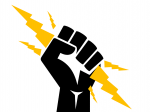Electricians install and repair the wiring in buildings.
It includes electrical systems, such as HVAC, lighting, security, and computer networking.
Today, electricians work in four main sectors:
- Residential Electricians
- They work on home premises, from single-family houses to apartment complexes.
- Commercial Electricians
- They work on buildings and industrial facilities that don’t use high voltages.
- Industrial Electricians
- They install and maintain electrical machinery and components in industrial settings.
- Their work can include high-voltage electrical systems in industrial manufacturing facilities.
- Low-Voltage Electricians
- They work with low-voltage systems that usually include voice/data/video (VDV) systems and networks.
Some states combine some of these categories.
For instance, residential and low-voltage electricians can fall under the same category.
Other states may put commercial and industrial electricians into one category.
Besides these categories, electricians can be subdivided by their level of training and experience.
- Apprentice
- They are electricians in training.
- They work under the supervision of a licensed journeyman or master before becoming journeymen themselves.
- Journeyman
- They become journeymen after completing the apprenticeship program and successfully passing the state licensure exam.
- Master
- They have years of experience as a journeyman with proven high-level experience through a state exam.
Each state’s licensing regulatory board defines the scope of duties and parameters at every level.
Common Tasks and Duties Electricians Perform
In general, specific job duties define what it means to be an electrician.
For example, wiring a house.
While performing large-scale residential wiring projects, electricians should follow the sequence and adhere to certain rules that include safety, code, functionality, and aesthetics.
- Low voltage wiring for voice, data, and cable/video
- Washer, dryer, and stove, which require independent 220-volt circuits
- Ground connections on power outlets
- Lighting (light fixtures, light switches, closet lighting, and outside lighting)
- Power outlets (some state codes require tamper-resistant receptacles (TRRs) that help to prevent children from inserting objects such as paper clips)
- Circuit for a hot water heater
- Ground fault circuit interrupters (GFCI) on outlets/breakers in places where water is common like bathrooms, garages, and house exterior
- Breaker box/panel and circuit breakers
- Electricity for ventilation, air conditioning, and ceiling fans
- Outside lighting/power
- Main electrical service connection to the residence (overhead or underground connection)
- Circuit for heating and air conditioner units
Electricians handle the installation of materials related to each type of wiring system as per their knowledge of electrical theory.
It can include the following concepts:
- Circuitry
- Resistance
- Current
- Grounding
- Voltage
- Amperage
A Historical Perspective on Electricians
Even though electricity wasn’t used by humans until the 1880s, when the first central power stations appeared, its brute force was understood since ancient times.
Even in mythology, most of the important gods were those who possessed the power of electricity in the form of lightning.
- Thor for Norse mythology
- Tlaloc for the Aztecs
- Zeus for the Greeks
- Raijin for the Shinto in Japan
- Indra for the Hindus
There had been some close attempts in discovering how to make electricity work, but significant steps toward understanding electromagnetism were made only in the 1600s.
The first one to make an in-depth study of static electricity was the English astronomer William Gilbert.
Back then, he found that the best way of creating static electricity was by rubbing the cloth against amber.
That circumstance introduced the word “electro.”
Eventually, in 1752, during a thunderstorm, Benjamin Franklin conducted his key-on-the-kite experiment that we all learned in school.
With a few other important figures, there were major inroads to mastering electricity.
By 1875, the first electricians mounted the first street lighting system in LA, and three years later, in Paris.
Even then, electricians were somewhat divine.
Another noteworthy fact is that until 1884, there was severe competition between the widespread use of AC and DC.
If the invention of the first transformer didn’t take place that year, probably all our houses would be powered by DC today.
Now, everybody takes electricity for granted.
However, that doesn’t reduce the importance of electricians one bit.
The Big Picture: Staying Current in an Evolving Industry
As long as we use electricity, we need electricians.
With that, the duties of electricians are always changing.
The codes are always being revised to stay up-to-date.
For instance, in Portland, OR, the code was revised to require all houses built after 2008 to install child-proof electrical sockets in which you can’t insert single-pointed objects.
Besides the annual modifications of the code, the industry is evolving all the time too.
Solar energy is gaining popularity, and electricians are required to install and inspect solar panel arrays on roofs.
Also, such tech as fiber optics and LAN are relatively new and require fresh training.
With their training and education, electricians adapt to new situations and work environments.
They can find creative solutions to challenging situations.
You can become familiar with all the latest requirements and regulations through the state regulatory board, particularly:
- Wiring regulations
- Local code regulations
- National electrical code regulations
- Building regulations
This page is also available in Spanish.










